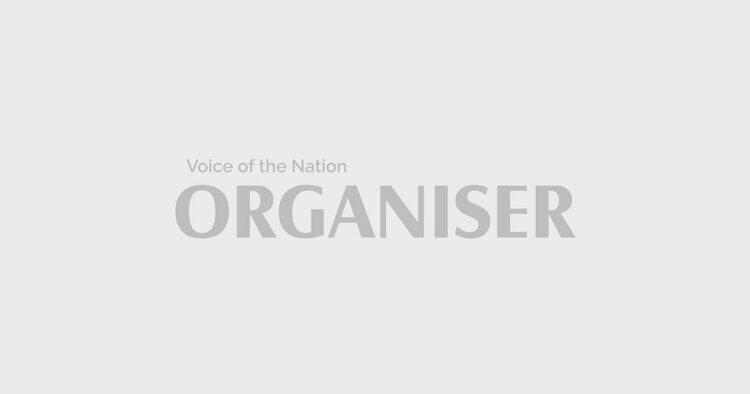Dr Lalitha Ramaswamy
NEP 2020 aims at making the education system holistic, flexible, multidisciplinary, aligned to the needs of the 21st century and achieve 2030 Sustainable Development Goals
The fundamental goal of the National Education Policy (NEP) is to develop thoughtful, well-rounded individuals with good character, intellectual curiosity, scientific temper, creativity, ethical and Constitutional values and above all the spirit of service, thus fostering their holistic development. NEP enables the development of an enlightened, socially conscious, knowledgeable, and skilled nation, through knowledge creation and innovation, thereby contributing to a growing national economy.
The policy envisages the presence of at least one large multidisciplinary university/college in every district by 2030, with more Higher Education Institutions (HEIs) offering medium of instruction in local/Indian languages. By 2040, all HEIs shall aim to become multidisciplinary institutions, with a minimum of 3,000 students in each. Such a development will help to increase the Gross Enrolment Ratio in higher education to 50 per cent by 2035. More HEIs will be established and developed in underserved regions to ensure access and inclusion.
NEP permits transformation of existing affiliating universities to research universities (Type I) which conducts significant amount of research along withteaching, or teaching universities (Type II), which place emphasis on teaching, while conducting allied research. Autonomous degree-granting colleges (Type III) are large multidisciplinary institutions which can award undergraduate degrees. Colleges which so desire are also permitted to merge with universities as constituent colleges (fully a part of the university).
The UG and PG structures are modified with the UG course offering a degree in three-four years with multiple exit options. A student will get a certificate after completing I year, diploma in the second year, and degree after the third year; after the fourth year he/she will receive degree with rigorous research project. The Master’s course can have either 3+2 (or) 4+1 years format, or 5-year integrated courses. Choice Based Credit System (CBCS) in the true sense of the word is recommended to instil innovation and provideflexibility to the students.The courses offered by HEIs will be renamed as Liberal Arts (i.e., maths, science, arts, humanities, vocational subjects (eg carpentry, professional subjects and soft skills all put together).
Academic Bank of Credit (ABC), another salient feature of NEP 2020 will digitally store the academic credits earned from various recognised HEIs. The students can take up any combination of subjects of their choice and earn credits and convert credits to degrees. The credits can be earned from multiple and different HEI (also international), regular and online modes, and the degrees can be awarded taking into account the number of credits earned. The programmes can be longer or shorter, or continuous, or lifelong learning enablers, thus providing ample opportunities to the students.
A comprehensive approach is recommended for appropriate curriculum framing (for holistic development), engaging and high-quality pedagogy, continuous formative assessment with scientific assessment methods to assess student achievement based on the learning goals, thus moving towards more continuous and comprehensive evaluation. Open distance learning (ODL) programmes will be encouraged and made equivalent to the highest quality in-class programmes available. HEIs will also focus on research and innovation and provide incubation centres, technology development centres, industry-academia linkages.
The quality and engagement of the faculty members of the HEIs will determine the effectiveness of the policy. Faculty members will be motivated through appropriate rewards, promotions, recognitions, and vertical movement into institutional leadership. Faculty members not delivering on basic norms will be held accountable
Courses and programmes on Indology, Indian languages, AYUSH, yoga, arts, music, history, culture, and modern India, internationally relevant curricula in the sciences, social sciences, and meaningful opportunities for social engagement will be started to promote India as an education hub. Foreign universities can also set up HEIs in India.
The quality and engagement of the faculty members of the HEIs will determine the effectiveness of the policy. Faculty members will be motivated through appropriate rewards, promotions, recognitions, and vertical movement into institutional leadership. At the same time, faculty members not delivering on basic norms will be held accountable.
The functions of regulation, accreditation, funding, and academic standard setting will be performed by distinct, independent, and empowered bodies as four independent verticals within one umbrella institution namely, the Higher Education Commission of India (HECI); the first vertical of HECI being the National Higher Education Regulatory Council (NHERC), the second being a ‘meta-accrediting body’, called the National Accreditation Council (NAC), the third being Higher Education Grants Council (HEGC) and the fourth being the General Education Council (GEC) which will frame the expected learning outcomes for higher education programmes.
The success of NEP depends on confidence, cooperation and commitment of all stakeholders of Higher Education. The final vision is for India to be restored its role as a Vishwa Guru by building capacities to promote student wellness. NEP 2020 aims at making the education system holistic, flexible, multidisciplinary, aligned to the needs of the 21st century and achieve 2030 Sustainable Development Goals.
(The writer is Advisor IQAC, Kongunadu Arts & Science College, Coimbatore, Adjunct Faculty, Department of Dietetics & Applied Nutrition, Welcome Group School of Hotel Administration, Manipal Institute of Higher Education, Manipal)














Comments